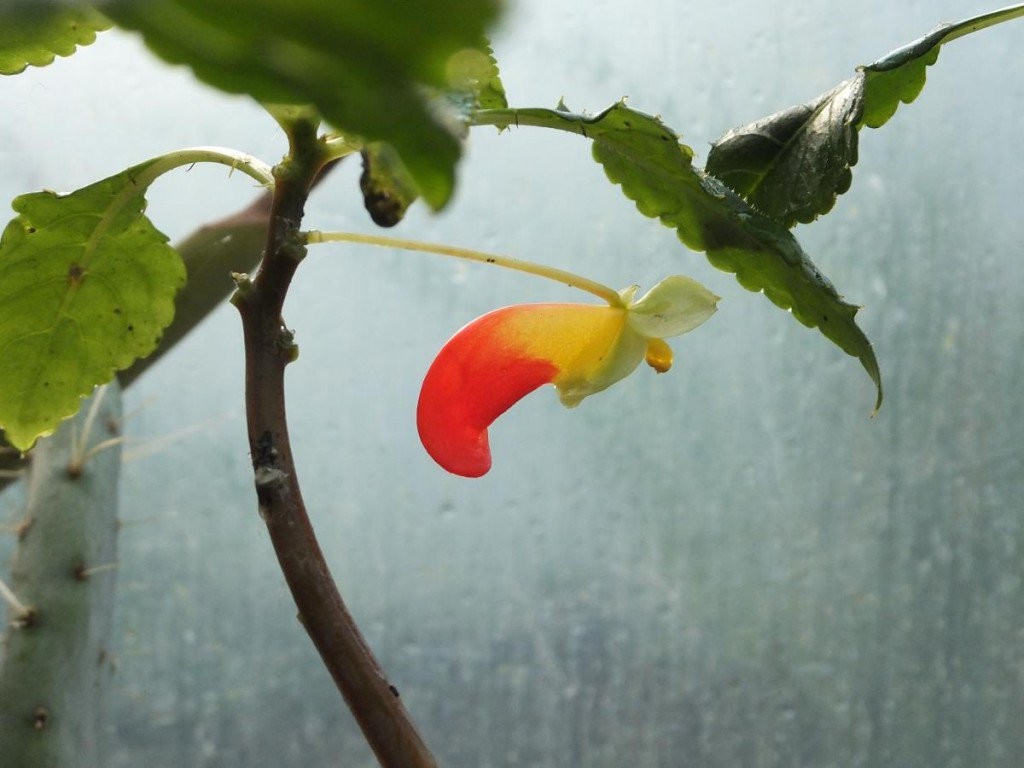
A Parrot plant will be the most fascinating display in your greenhouse or conservatory. It will, if grown well be most impressive and flamboyant. Even grown badly it will still be curious and interesting. For this is one of those quirks of nature.
Each waxy almost plastic bloom is gorgeous with a firm body of bright yellow and crimson. But more than that, each bears a remarkable resemblance to a miniature parrot swinging on a fine stem. Perhaps it is the ghastly current Latin name, but this is a gem one seldom comes across. Yet it is very easy to propagate by any piece as with any other of its close relations the Busy Lizzies. (Either properly in a sharp gritty compost in a propagator, or even by just standing a bit of stem in a glass of water.) Admittedly this somewhat succulent soft stemmed plant can suffer attacks by most of the usual greenhouse pests; aphids, red spider mites, whitefly, mealy bugs. But then again these are all easily controlled by a host of standard measures anyway.
And a Parrot plant is not at all difficult to grow being fairly happy in any reasonable compost if kept fed, watered and frost free. Obviously from its prior Latin name it was once considered a denizen of African rain forests and indeed those conditions most suit it, warm, humid dappled shade. Given a large tub of rich, preferably leaf mould enriched, moist compost, a good position, fairly light but not scorchingly bright, in a humid heated greenhouse and a plant will reach four or even five feet high. Either single or several strong almost tree like multiple stems will each support a veritable flock of stunningly coloured miniature parrots feeding in the canopy of dark green leaves. It’s a superb display through most or all of the year depending upon vigour. Even starved in a small pot in a just-frost-free rather arid conservatory a plant may only reach a foot or so but will still hatch a small colony of fantastical parrots.
Naturally children are transfixed and this is a good plant to start them off with, especially as it will survive much neglect yet still be floriferous enough to show off to their friends. And because it has such instant appeal, and is seldom sold commercially, their first Parrot plant could be the start of a profitable hobby. Very, very easy to propagate, flowering soon after and sold with no hesitation to almost anyone who first sees one I’m surprised I do not come across these that often. Indeed what a good idea, a starter plant should be issued to every school in the country.










